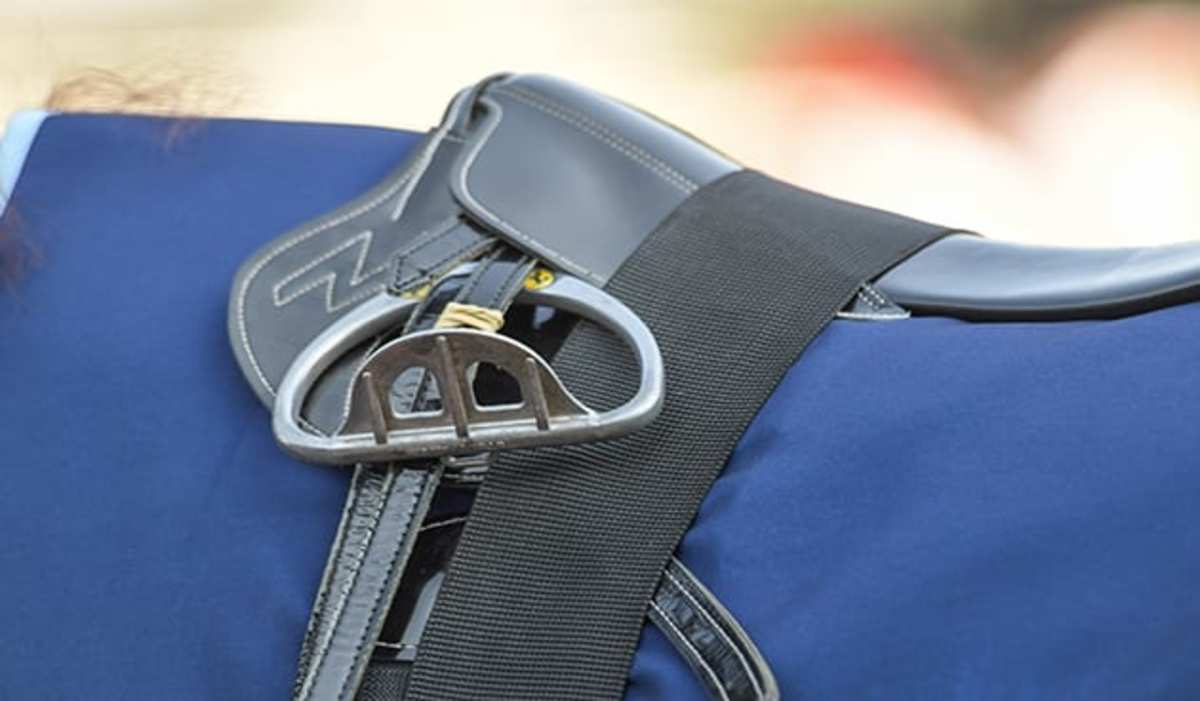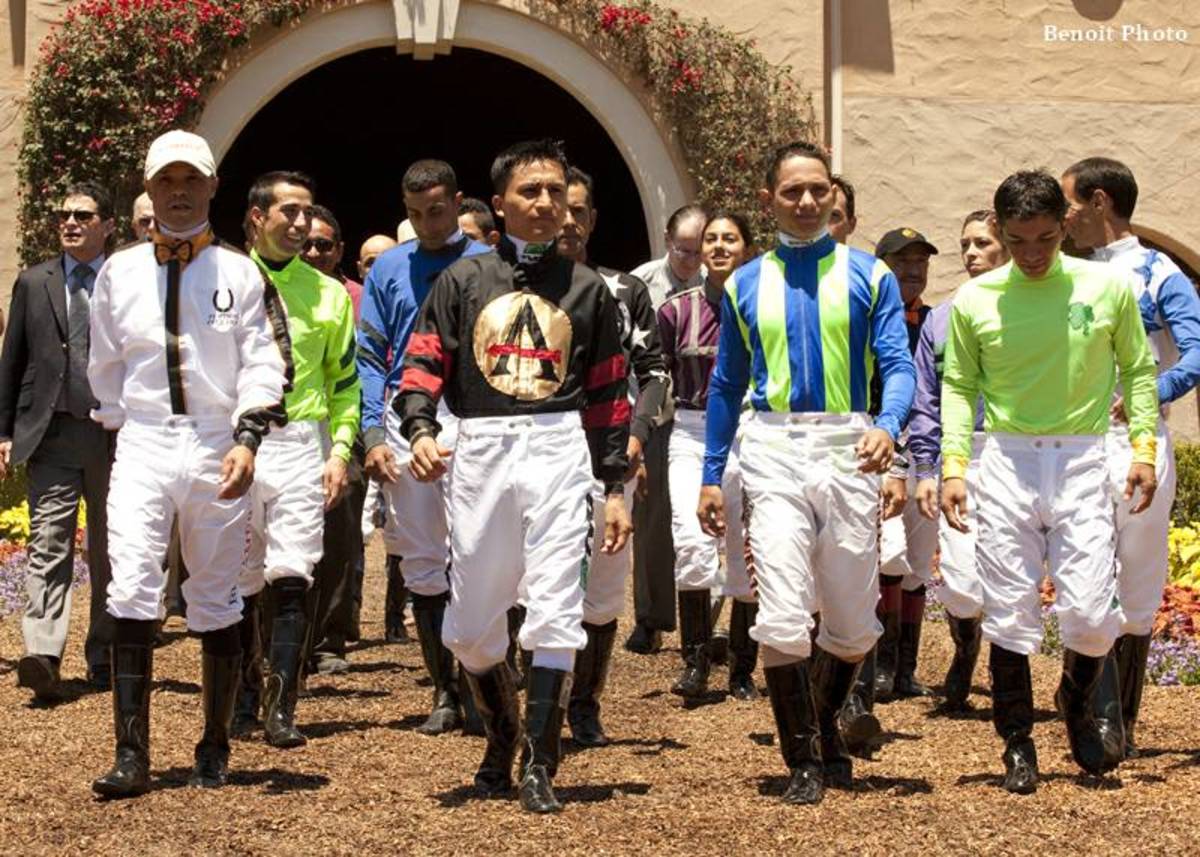The subject of jockey weights has been a central part of the news in racing this week as reports circulated that Eclipse Award-winning apprentice jockey Alexander Crispin has been fined and suspended for carrying a lower weight than advertised in a race on Jan. 16.
Most people probably know that jockeys are weighed both before and after a race to ensure they are carrying the weight printed in the program or on the changes list, but unless you've spent time in the jocks' room, you may not know the finer points of how the process works.
First of all, it's important to understand the terminology. “Weighing out” refers to the process of recording a rider's weight before a race, when he or she is on their way out of the jockeys' room. “Weighing in” refers to recording their weight after the race, when they're on their way back inside.
The procedures in the jockeys' rooms vary somewhat between tracks and states, depending on the state rules and preferences of the racing officials at work in a given place.
Javier Torres, clerk of scales at Keeneland, Churchill Downs, and Kentucky Downs, said that riders at those tracks are required to check in at least 30 minutes before the first race where they are named to ride. They will consult a board where Torres has written the weights each rider must carry through the day. By the time they sign in, Torres said, jockeys already have a pretty good idea of what their weight will be that day. At sign-in, they're required to write down what their weight will be for the day and Torres uses that to calculate overweights, if necessary.
“Most of the jockeys, they know what they weigh, they know their bodies,” said Torres. “Most of them know, and I know, what they can do, what their lightest weight is they can do.”
If you sit in the grandstand throughout a race card, you may hear new overweights announced late into the card. Torres said that at the tracks where he works, that's probably because a rider didn't have a mount for the first few races and just signed in, not necessarily because they were struggling all afternoon to reduce weight or have ballooned after an earlier race.
Of course, there will be some races where a rider has to carry more weight than others. There are a few different ways the clerk can add weight to a rider. In Kentucky, Torres uses rubber pads which sit between the saddle towel and the saddle and are designed to weigh between one and ten pounds. Some riders don't care for those pads because they feel the slick outer coating makes the saddle slip, so in some cases Torres will still allow use of lead weights, which are tucked into pockets under the saddle flap.
“Most jocks have three different saddles, depending on the weight they need,” said Torres. “The more weight, they go with the heavier saddle. Sometimes their heaviest saddle isn't big enough. John McKee, he might not even weigh 100 pounds. He has Pat Day's old saddle, and that saddle has the lead built into the actual saddle. I think it weighs 12 or 13 pounds.”

In New York, lead weights are still the preferred system to add weight to a rider unless a trainer supplies a weighted pad, which must be approved by the stewards and the clerk of scales.
Kentucky, California, and New York do not count safety equipment like vests or helmets against a rider's weight allowance. In New York, clerks can count some of the horse's equipment like martingale, breastplate, or other equipment toward a rider's weight allowance.
Scales and recordkeeping vary also. In Kentucky, riders are weighed with a digital scale 15 minutes before each race and the scale's readings feed into a computer system that keeps a running record of those weights. The same happens at NYRA facilities, but at Finger Lakes, weights are manually recorded by the clerk. In Kentucky, Torres and his assistants then place the rider's equipment on a table which is highly visible in the jockeys' room, and cover it with a saddle towel to indicate it has already been measured for the day. The scale and computer readings are verified by the stewards periodically.
In Kentucky, valets do not always saddle horses for the same rider ahead of each race. Torres randomly assigns numbers to valets each day and matches them to horses by post position order, which reduces the opportunity for a valet to collude with a rider ahead of time to change equipment or remove weights. In New York, clerks randomly assign valets to different riders each day.
After the race, riders weigh back in. Traditionally, Kentucky used to weigh only the top four finishers, but now weighs the top five due to certain types of exotic wagers that include the fifth-place entry. Kentucky also allows a rider to come back weighing up to six pounds heavier – three for equipment changes, and three for the accumulation of mud or water on the rider or their tack.
New York has detailed rules on the books prohibiting riders from touching any person or thing with their equipment after dismounting and prior to weigh in. Riders are also penalized in New York and in California for being more than one pound short of their weigh out weight, or for being more than two pounds over their weigh out reading.

The topic of rider weights has long been a heated one, with many riders advocating for a higher minimum through the years. Torres said he believes fewer riders are going to unhealthy extremes to reduce weight than they did when he started as a clerk of scales some 15 years ago. He can remember one rider routinely sweating off seven pounds in the sauna each day; the steam rooms have been closed since COVID-19 began, and he believes fewer riders are “flipping” (or inducing vomiting) than they once did.
“It's hard to go in there and pull weight,” said Torres. “I tell them, don't kill yourself. I'd rather be stronger than be lightheaded trying to pull weight. To me, over the years, the number of riders having to reduce really hard to make weight is less and less. I know a lot of guys who realize now it's going to affect them in the long run when they retire.”
This piece is part of an occasional series exploring the way different regulations and procedures in racing work. Want to know how something in racing works? Email us using the Ask Ray button in the red bar at the top of this page.
The post How It Works: A Look At How Jockeys Weigh Out appeared first on Horse Racing News | Paulick Report.
